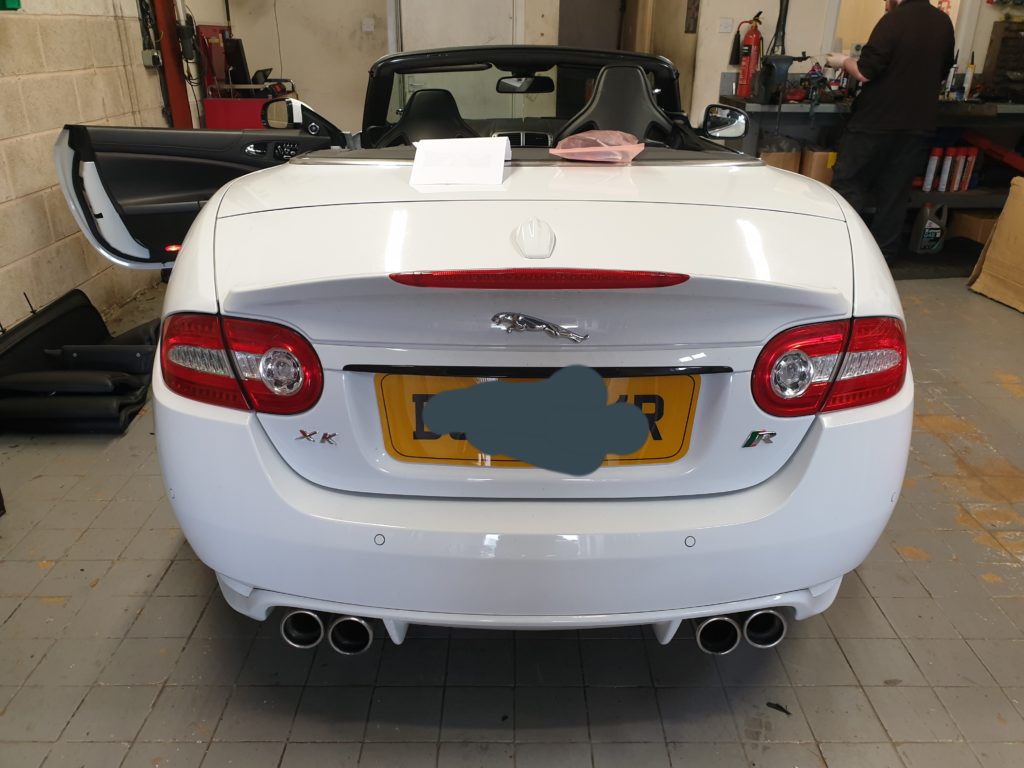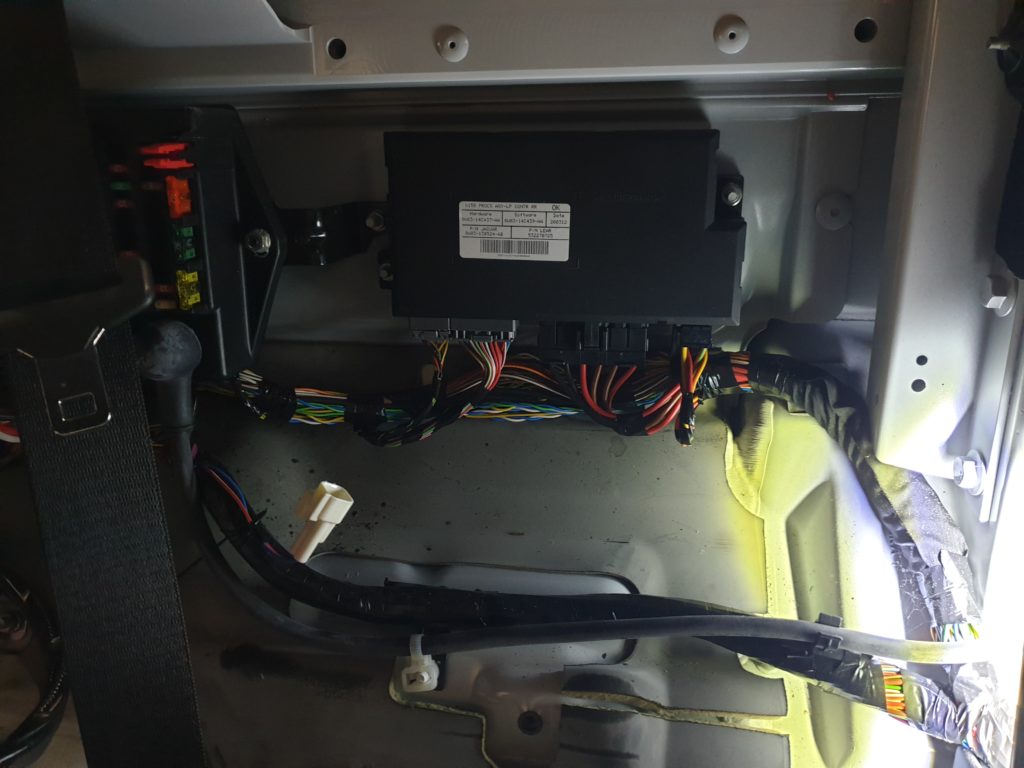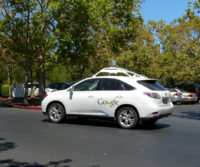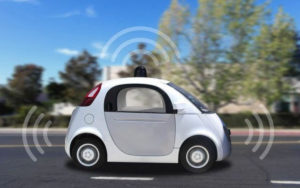Summer season is here
With the weather getting warmer we are starting to see more cars with A/C issues. Here is a Peugeot RCZ […]
READ MORE -
These roofs as standard dont come with automatic operation. With our module modification fitted it becomes operational from the key fob.

Even though Brexit is was delayed the factories still closed and production fell over 40% according to to the SMMT who claimed only around 70,000 cars came of the production line; that was 56,999 fewer than in April a year ago.
The SMMT said car firms had brought forward their annual stoppages normally scheduled for the summer holidays.
It said the shutting of factories was part of a raft of costly measures, including stockpiling, training for new customs procedures and rerouting of logistics. It said the factories would not be able to repeat the process for the new 31 October Brexit deadline set by the European Union.
Mike Hawes, SMMT chief executive, said: “Today’s figures are evidence of the vast cost and upheaval Brexit uncertainty has already wrought on UK automotive manufacturing businesses and workers.
“Prolonged instability has done untold damage, with the fear of ‘no deal’ holding back progress, causing investment to stall, jobs to be lost and undermining our global reputation.”
Global slowdown
The stoppages in the factories have exacerbated a continuing slow down in the global car industry caused by the trade tensions between the US and China, uncertainties over the arrival of electric and self driving cars, and tougher environmental controls after the VW emissions scandal.
April was the 11th consecutive month of output falls in the UK.
In the year to date, 127,240 fewer cars have been built compared with the same period in 2018 – a decline of more than a fifth.
The SMMT estimated production for the whole of 2019 would be about 10% down on last year. It said the market might pick up by the end of the year if there was a favourable deal between the UK and the EU and a substantial transition period to adapt to trading outside the single market.
But it said a no-deal Brexit would make the declines worse with the threat of border delays, production stoppages and additional costs.
Mr Hawes said: “This is why ‘no deal’ must be taken off the table immediately and permanently, so industry can get back to the business of delivering for the economy and keeping the UK at the forefront of the global technology race.”
The Department for Business, Energy and Industrial Strategy said: “The Government wants to see the UK automotive sector continue to grow and attract further investment.
“Through our modern industrial strategy we continue to invest in the future of our automotive industry, including £1bn for research and development into cleaner vehicles, and the Faraday Battery Challenge to develop the next generation of car battery technologies in the UK.”

Around 1,000 companies in the UK car-accident repair industry ‘could be on the brink’ of collapse within two weeks of a Brexit no-deal, business leaders have warned It could mean the cost of getting your car repaired goes up – as parts become more difficult to come by. Many other companies could be forced to close within a month, an industry meeting of 17 firms heard.
Body shops that repair cars in accidents face a very uncertain future, business leaders warn
Body spraying a panel in a body shop – the Government has been accused of doing very little to help the industry which depends on speed at the border
New border checks risk slowing down business dramatically for an industry which relies on getting car parts in quickly from abroad, including Europe.
The Government is facing calls to take a ‘no-deal’ Brexit off the table from the car industry
According to car industry experts, the car repair industry had been ‘severely underinvested in for many, many years’ and therefore didn’t have the reserves to step up to the difficulties of a no deal – if the supply chain was hit with delays. Meanwhile Kate Goodwin, who fronts the repair programme and supply chain at The Innovation Group, an organisation which supports industry, added: ‘Repairers don’t get paid until a repair is completed, margins are tight.
According to the government the priority is to deliver a deal that will protect UK jobs and prosperity and provide certainty for businesses as we leave the EU. The Government is preparing to ensure the country is ready for every eventuality.

Into our workshop was this lovely example of a Jaguar xfr. As standard these car do not have 1 touch or remote operation for the roof.
We intergrated a module in to the roof system that allows this to happen. We access the roof module which is behind the rear seats

Once the module is fitted the roof operation is much easier

A survey has found that just over half of Brits are not able to do basic checks on a car, such as a tyre change or checking coolant levels.
According to Tyre Shopper found that almost half of the 2000 asked didn’t know how to change a car tyre or check the coolant levels in their car. This appeared to be even more so when asking those under the age of 25’s compared to the over 55’s
The survey found that many of the youngsters didn’t have a clue and would always ask their parents to help them out with car issues; fathers were the most asked by almost double compared to those asking their mums for help with car maintenance issues.
After asking parents, next inline tended to be Google with almost 1 in 3 searching online for answers.
2005 VW Golf with driver’s door electric window issues.
New mechanism required.
Not the easiest jobs but with our experience completed without problems

Tesla the electric car maker has proven that hundreds of thousands of people are unlikely to purchase sleek luxury electric cars over models from Mercedes or BMW. The market shares of these legacy brands have been slipping with the rush for electric cars even as automakers are making massive investments in the electric future. Daimler has just placed an order for batteries for $23 billion, GM and Ford are both undergoing massive restructuring to keep pace even as Volkswagen has already announced its $50 billion push for electric vehicles.
The market will undoubtedly transition to electric vehicles but the timing of when it is likely to happen is still not confirmed. Just 2% of plug-in electric cars are presently being used in the US as compared to 2.2% worldwide. The massive numbers of electric vehicles are sold globally over the last year is approximately 2 million but just one in 250 cars operate on electricity. The sales of electric vehicles have only risen in Norway which has lavished subsidies and perks to witness an increase in EV car sales in the region of 30%.
The auto industry is currently facing a dilemma which was studded by the consulting firm Deloitte. The dilemma faced by automakers relates to how fast they should be making investments in fresh electronic technology while generating profits to make the transition. The consulting firm expects 21 million electric vehicles to be manufactured and roll over the assembly lines over the next decade even as the prices for EV vehicles slip below similar gasoline and diesel models by 2024.
However, the rush to expand the manufacturing capacity of electric vehicles is predicted to produce a glut of EV’s affecting the bottom lines of manufacturers. Deloitte has stated that their projections indicate supplies will vastly outweigh demand from the market by approximately 14 million units over the next decade. The research conducted by Deloitte suggests that with every manufacturer looking forward to mass producing electric vehicles ever from over a dozen new car makers from throughout the globe the number of manufacturers cannot sustain itself.
Estimates are also provided that the appeal for electric vehicles may not spread fast enough beyond the techies and greenies that initially fuelled the early days of the market as commented by David Keith and engineer and Prof at the MIT Sloan School of Management who also mentioned that electric vehicles may struggle to break the 5% barrier of the US market in the near future. Consumers in the US believe that isn’t a problem which the electric vehicle can solve for them and this is the reason for the prediction made by David Keith.
A former BMW engineer who presently manages a consulting firm in Silicon Valley, Sven Beiker, also has a similar opinion. Even as prices of electric vehicles begin to come down government subsidies which are presently offered for these vehicles are likely to phase out manufacturers such as Ford, Nissan, GM, and Tesla. Price-sensitive buyers could be deterred by the lack of subsidies. Beiker has commented he finds Tesla impressive with the model 3 being on top of the list for 2018 car sales. However, it still needs to be ascertained whether Tesla is managing to hold its position simply because it is an electric vehicle or whether it is just a cool new car.
This vehicle came from another garage with engine management light on. The fault code related to exhaust temp sensor issues.
The customer had not long purchased the vehicle and didn’t know the history of it.
On examination it was found that the DPF pressure sensor had been bypassed with a emulator to kid the car into thinking all was well with the exhaust and emmisions. We removed the bypass module and put it back to standard, whereupon the fault codes changed to DPF pressure issues.
The most common reason to fit an emulator would be because the cost of repair . If the filter needed replacement the costs would be in the 100’s of pounds.
We advised this customer on a correct repair which involved removing the DPF and cleaning it out professionally and then do a regeneration on the system, but on removal of the filterit can be seen that a hole had been drilled through the centre of the filter to allow the exhaust gases to escape
There was no choice but to replace the filter for the customer.

 Are you looking forward to safeguarding your vehicle as well as your journeys? You can consider your desire as fulfilled because the most recent innovation which is a high-quality dash cam is just what you need. The initial footage ever recorded on a Dash-cam was in 1969 in Australia by a lady who was totally unaware she had discovered something which would be extremely important.
Are you looking forward to safeguarding your vehicle as well as your journeys? You can consider your desire as fulfilled because the most recent innovation which is a high-quality dash cam is just what you need. The initial footage ever recorded on a Dash-cam was in 1969 in Australia by a lady who was totally unaware she had discovered something which would be extremely important.
When making a decision to have a Dash-cam you may wonder why you should be spending additional money for the device or even be concerned about whether a single Dash-cam will be suitable for your needs. The choice is entirely yours because a single device would be logical but many are using additional devices to cover multiple viewpoints. For starters, you can consider having a dashboard Dash-cam because of the following reasons.
A Dash-cam offers you cover when driving especially against any challenges you may encounter. Insurance companies are demanding evidence of any incidents you may be involved in and footage from a Dash-cam is an appropriate solution.
Recording questionable driving to hand over to the police or even upload it to social media sites such as YouTube if you prefer.
Safeguarding your car in car parks. You do not have the freedom to believe everyone driving a vehicle is just as courteous as you are especially when parking or manoeuvring. Having a permanently installed hidden Dashcam will give you all the evidence you need to safeguard yourself.
It is a perfect tool which can act as evidence against vandalism regardless of whether it is your vehicle which is being vandalised or you are witnessing other vehicles facing similar encounters.
Car spotting. This is the perfect fit for you to get up to 4K car footage of all types including the Ferrari speeding past you or the latest Phantom 2018. A Dash-cam will capture all the footage leaving you ready to upload it to your Instagram or YouTube account.
Documenting your travels. You have a record in your possession which can be uploaded to your website or blog from the Dash-cam are simply maintain a record of your travels. You have an opportunity to capture the unknown because the footage you get is great and can always be uploaded to social media websites.
Recording business meetings. The sound option within the Dash-cam proves beneficial in such cases because you can transcribe the audio of your meeting at your leisure. It will even capture some light bulb moments if you come across them. Use your Dash-cam to watch for pets by safeguarding your own and everyone else’s from theft, injury and misadventure.
A Dash-cam is a perfect tool to capture a shot of nature such as a swooping owl or even recording your birdwatcher’s, The list of things you can do with a Dash-cam are endless and therefore you are suggested to have one installed in your car without further delay.

 The Future of Artificial Intelligence Artificial intelligence is certainly the future of the transport industry but questions remain about who will be present to take the onus of responsibility if things began to go haywire.
The Future of Artificial Intelligence Artificial intelligence is certainly the future of the transport industry but questions remain about who will be present to take the onus of responsibility if things began to go haywire.
Less than a decade ago drivers around the world wouldn’t have believed that things like automatic park assist or automated headlights would be here today. These mechanical innovations along with numerous others have made it easier and safer for driving while removing the stress of this task at the same time.
The second stage of automotive innovations does not simply involve mechanical improvements. The time has now arrived to witness cars with brains of their own. Dramatic leaps have of late been made in artificial intelligence [AI] and you simply need to scan the headlines to find numerous examples of artificial intelligence in practice.
Things have changed by a large extent and every stakeholder or technocrat in the automotive industry is looking forward for a way to capitalise on artificial intelligence. IBM has collaborated with General Motors and Google Waymo may be just months away from inviting passengers to use the first driver-less ride-hailing service in the world.
Things are not just going to stop with driver-less cars. They are certainly receiving plenty of attention but it is just one of the many uses of AI in the car industry. If you are looking for more information about how artificial intelligence will be used this article will be taking a closer look at the AI automotive industry trends to understand the factors that are fuelling this explosive market.
It is estimated that by the end of next year approximately 10 million autonomous cars will be on the roads. Quite a few models of these cars have already been introduced with various features. Self-driving cars fall into two categories which are semi-autonomous and fully autonomous. Fully autonomous vehicles can move from point A to point B without any intervention being needed from the driver. On the other hand, a semi-autonomous car is a vehicle with features which allow it to accelerate, steer the course of the car, and brake with minimum or no interactions from the driver.
A note of caution… In 2016 we witnessed the highest number of fatalities on British roads in the last five years. It is estimated that with congested roads and long commutes self-driving cars could potentially help to make the roads safer. Research conducted by KPMG discloses that fewer deaths will be recorded between the years 2014 and 2030.
Cameras, software and sensors are now making it possible for cars to absorb data around them for learning and responding appropriately. From 2009 the self-driving car from Google, Waymo has allegedly absorbed information of up to 300 years of driving experience. Before this technology is introduced to mainstream customers with the promise of safer roads and stress-free driving there is a need for costs to be reduced and regulations to be clarified. Additionally, further testing is certain to reveal safety concerns which are unique to this fresh technology.
Having a super artificial intelligence brain in your car may sound comforting but if failures are noticed because of poor quality mechanical centres then artificial intelligence will not receive the information it needs to prevent accidents. One needs to understand how many precautions will be needed and how frequently should checks like MOT be conducted on these technologies before they are fully introduced into the market.
Estimates have been provided by the Road Haulage Association there is a shortfall of 60,000 drivers which is increasing annually because of an ageing population along with the recruitment limitations being imposed by Brexit. It is under these conditions that the information about autonomous trucks which could soon be on the roads be welcomed by companies in the business and drivers who are presently overworked and turning away from work.
A fully autonomous truck with 18 wheels was tested in America recently. The truck was not entirely driver-less but it could maintain consistent speeds, a safe distance from other vehicles, remain in the selected Lane and slow down or stop according to traffic and road conditions. This option not only allows drivers to optimise their time on the roads but also handles logistical tasks like scheduling and rerouting. It also improves safety and communication via connectivity and integration.
Uber’s self-driving truck underwent a 120-mile journey in 2016 to deliver 50,000 beers. In the UK self-driving platoons are undergoing testing with the expectation that when they are implemented they will ultimately reduce emissions of carbon dioxide while improving efficiency.
Analysts within the industry are estimating that by 2020 approximately 250 million cars will be connected opening up the entire world of connectivity capabilities both for manufacturers and drivers. The connectivity to cloud-based platforms will enable drivers to:
The potential benefits mentioned above also have a few risks associated. We are all aware of how our PCs are susceptible to viruses, hacking and malware. Under the circumstances, the implications of high-tech cars must also be considered. These developments are definitely promising to revolutionise the automotive industry. However, there is the small matter of understanding when humans should be controlling the vehicle or when they should defer to artificial intelligence for both efficiency and safety. Artificial intelligence won’t tire itself but could definitely make us complacent with the driving technologies like cruise control and automatic braking. The debate on this subject is ongoing.